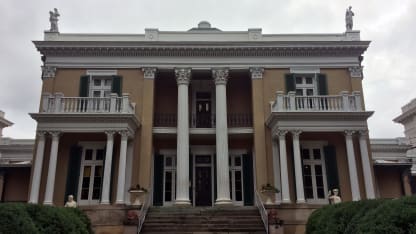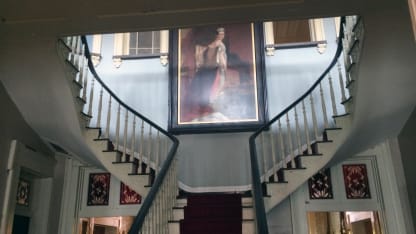On Feb. 25, 1862, Nashville became the first Confederate capital to fall into Union hands. At the time, it was the second largest city in Tennessee behind Memphis and home to the Nashville Armory, which manufactured arms for the Confederate government.
\[RELATED: Complete Stanley Cup Final coverage\]
It was also home to Belmont Mansion, which was one of the most elaborate homes of the antebellum South with 36 rooms on an estate of 180 acres that featured formal gardens, gazebos, a bowling alley, art gallery and even a zoo. I visited the Belmont Mansion, which is now part of the grounds of Belmont University, on Monday during a break between the morning skate and Game 4 of the Stanley Cup Final between the Predators and Pittsburgh Penguins.
The mansion is open daily for guided tours, which last about an hour. Admission is $12.
Much of the main structure, including the grand salon with its Corinthian columns, gasoliers, statues and fine paintings, has been restored to appear as it did during and in the years immediately following the Civil War.
Belmont Mansion and the land surrounding it were occupied by Union forces commanded by General Thomas J. Wood prior to and during the Battle of Nashville on Dec. 15-16, 1864. Owned and built by Adelicia Hayes Franklin Acklen Cheatham and her second husband, Joseph Alexander Smith Acklen, Belmont Mansion occupied one of the biggest hills in Nashville and its cupola provided a clear view of the city, making it a prefect vantage point for General Wood to view the battle.
Adelicia would've been an extraordinary woman in any age. She was married three times, had 10 children and amassed one of largest fortunes in the U.S. during her lifetime. Prior to their wedding, Adelicia made Joseph sign the equivalent of a prenuptial agreement to protect her wealth (she was worth about $1 million at the time).



















